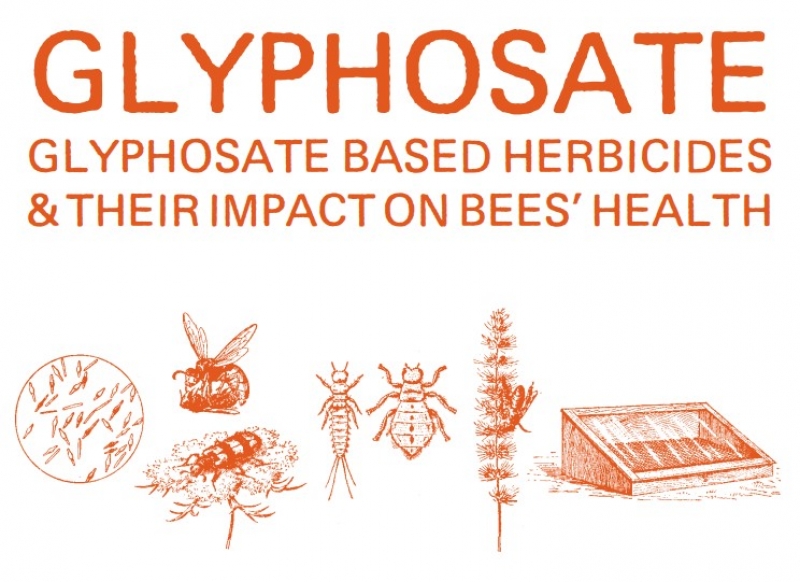Many people assume that herbicides, since they are designed to kill plants, are not toxic for bees. This, however, is far from the truth. In our latest briefing, we list scientific findings that reveal that glyphosate-based herbicides are toxic to bees in many ways. Bees are exposed to these chemicals either by direct contact or by ingestion via food and contaminated water.
Glyphosate-based herbicides are widely used to combat weeds in agriculture, towns and cities, peoples’ homes and gardens and even in nature-protected areas. As a consequence exposure to glyphosate is widespread in the environment, which is impossible for bees to avoid. What is the effect?
The fact sheet shows that glyphosate:
- Disrupts the gut microbiome and makes bee colonies much more vulnerable to disease and other harmful effects.
- Disturbs development of bee brood (eggs, larvae and pupae). Honey bee brood fed with glyphosate-contaminated food had delayed larvae development and reduced weight.
- Can negatively affect the thermoregulation of bumblebee colonies: non-lethal exposure to glyphosate leads to the indirect decline of the colony.
- Has a negative impact on reproduction: glyphosate impacts normal development in bees and reproduction success.
- Disrupts the foraging abilities and navigation: glyphosate impacts their nervous system which affects bees’ behaviour at very low concentrations. This weakens the colony’s potential to survive.
- Has a negative impact on bees’ learning ability and memory: glyphosate reduces honeybees’ sensitivity to nectar and elemental learning and short-term memory retention.
- Glyphosate products contain co-formulants that can be toxic to bees as well. The toxicity of these additives is not properly assessed either alone or in combination with the other ingredients.
Based on extensive independent scientific literature we can conclude that the current use of glyphosate-based herbicides poses a significant risk to bee health and the survival of the colony. This is very relevant for the discussion on the renewal of the authorisation for glyphosate in the EU that has to be concluded by December 2023. Pesticide-active substances and products placed on the EU market must not adversely affect human or animal health or the environment. The protection of honey bees and their colonies is clearly highlighted in the EU pesticides Law (Regulation 1107/2009), which is underpinned by the precautionary principle.
The objective of the EU Pesticide Law to protect human and animal health and the environment should always ‘take priority’ over the objective of improving yield production. Any discussion on interpretation of the regulation was clarified by the recent judgement of the European Court of Justice on the use of derogations for banned pesticides.
The ruling states:
“It should be borne in mind that those provisions are based on the precautionary principle, which is one of the bases of the policy of a high level of protection pursued by the European Union in the field of the environment …. in order to prevent active substances or products placed on the market from harming human or animal health or the environment. (47)
“Furthermore, it is clear, as stated in recital 24 of Regulation No 1107/2009, that the provisions governing authorisations must ensure a high standard of protection and that, in particular, when granting authorisations of plant protection products, the objective of protecting human and animal health and the environment should ‘take priority’ over the objective of improving plant production.” (48)
Conclusion
The harm to bees and bee colonies leave no space for the re-authorisation of glyphosate. This combined with all other negative impacts on human health and environment can only lead to one conclusion. Glyphosate should be banned in the EU when its licence expires in December 2023.
Read the full briefing HERE.
